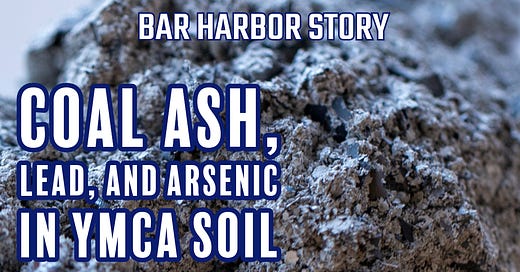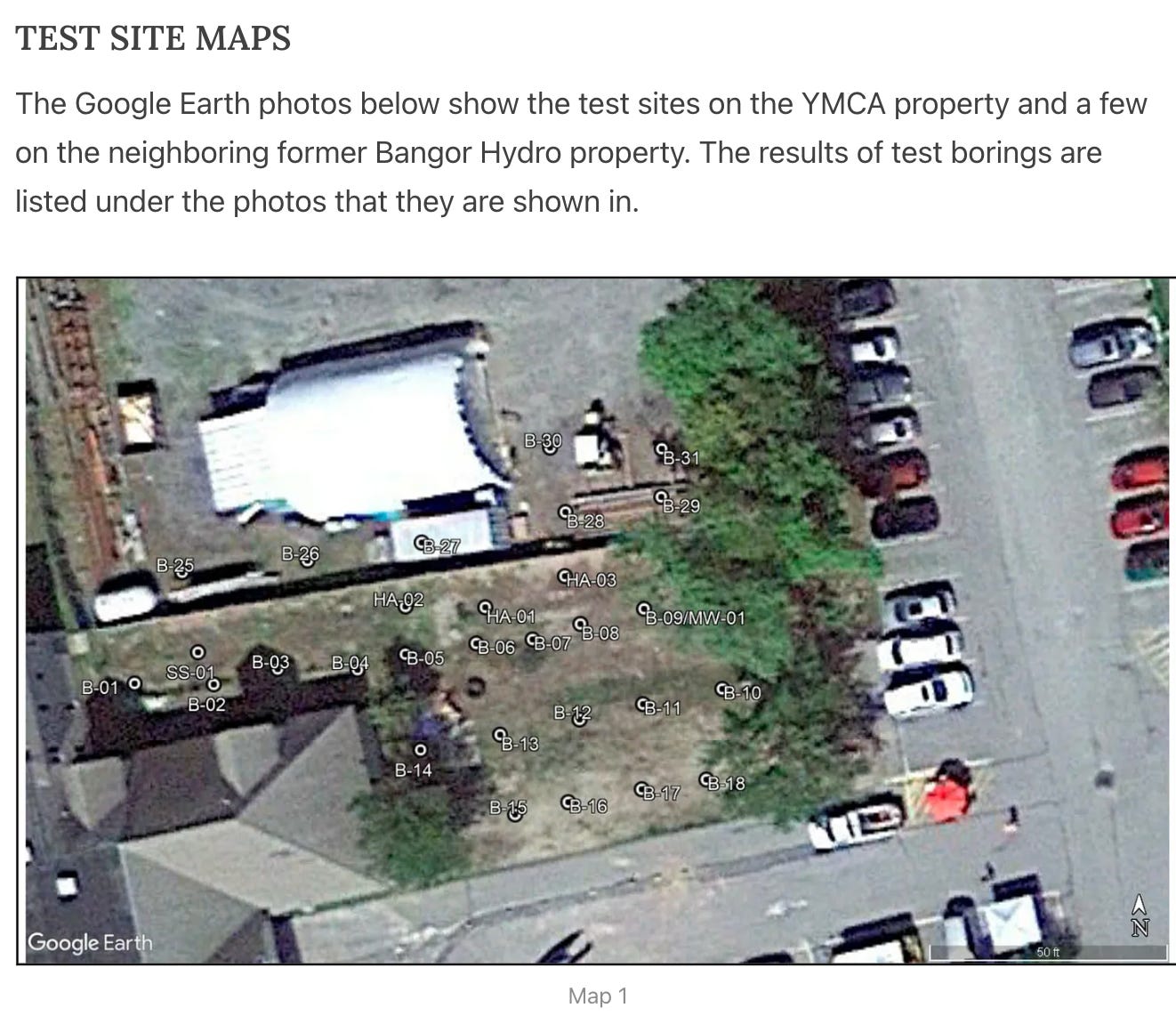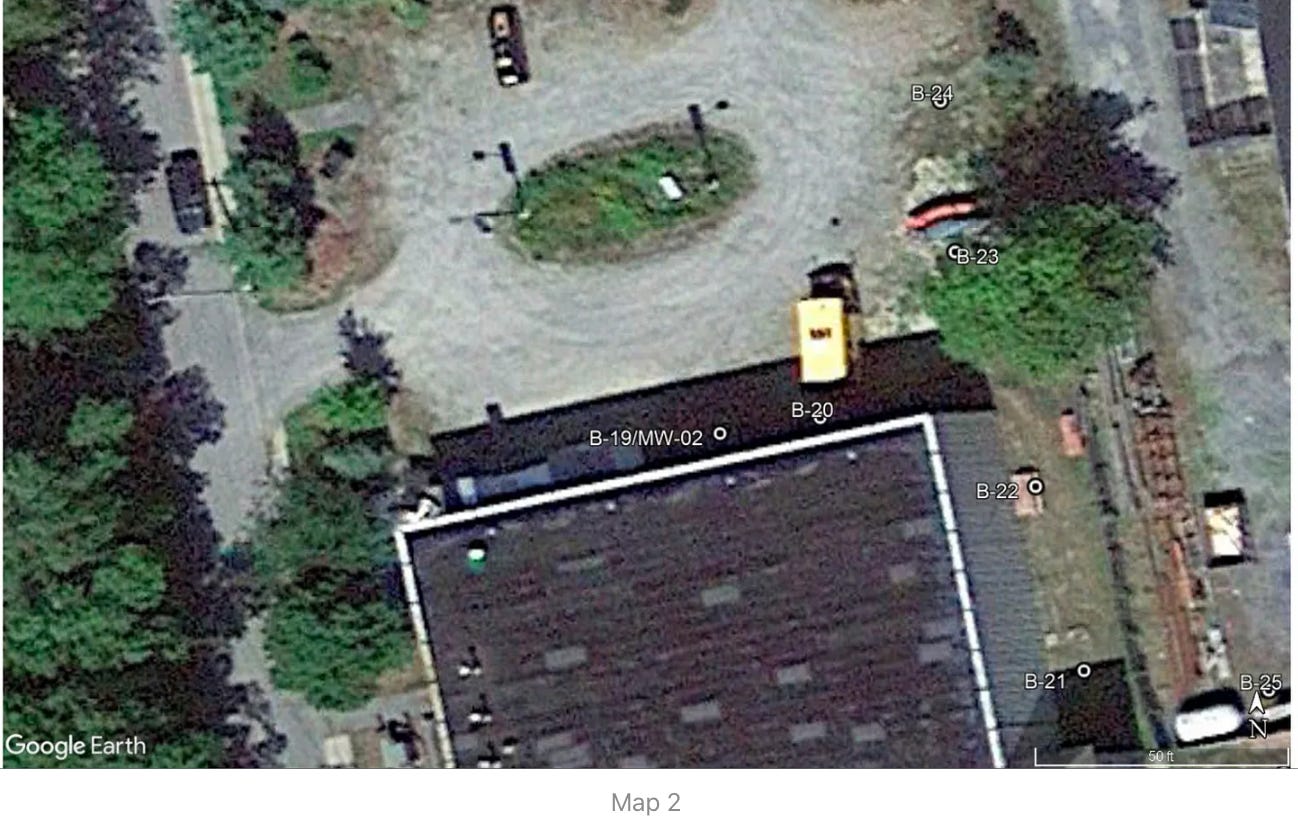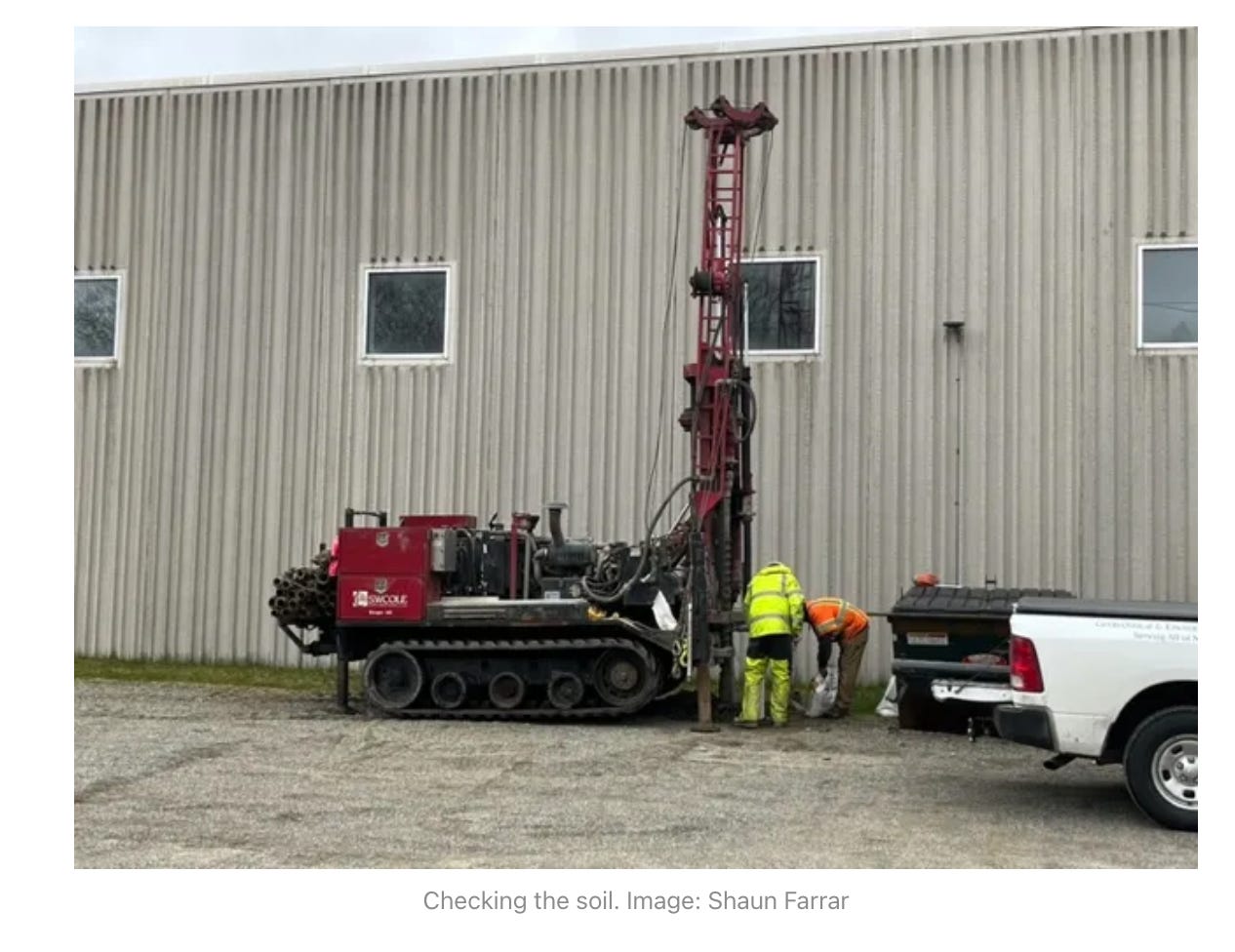BAR HARBOR—Coal ash. Arsenic. Lead. Cancer-causing chemicals. It all lurks in the top three feet of soil at the MDI YMCA’s Park Street campus, a lot that’s owned by the Town of Bar Harbor.
In 1998, before the Y was constructed, an investigation of footprint of the building found some unsuitable fill . In 2019 there was discussion about expanding the YMCA’s building to the east, which was related to an initial discussion for the Jackson Lab’s childcare being built there. When tested, they found not just unsuitable fill, but urban fill.
Coal ash and debris material either came from construction activities or the incomplete decomposition of materials on the site that was once owned by Acadia National Park and Versant Power.
According to geologist John Cressey, who did the “Phase II Environmental Site Assessment” report for his firm Beacon Environmental Consultants, LLC, some of those elements in the soil can be considered carcinogenic. Some is lead. Some is arsenic.
All of which does not bode well for a facility that has a daycare, he and Mount Desert Island YMCA CEO and Executive Director Ann Tikkanen said to the Town Council on Tuesday during its meeting at the town’s Municipal Building.
The Y had intended the area to be used for kids to have outdoor learning experiences. It has recently had an awning approved for part of the area. It also had an RV approved for a back portion of the lot this summer to support seasonal staff housing. The YMCA also received an additional $50,000 from the town’s ARPA funds to help cover its operating costs this year. This is beyond the amount in the town budget.
“That is literally—if you walk behind the building right now—the wood chips have been moved out of the way. And you can see a pocket of coal ash that’s uncovered. There are legitimate concerns from a health and safety perspective if you had a child go out there and start eating the dirt in that area,” Cressey said.
THE WORK DONE AND THE WORK THAT MIGHT BE DONE
Dave Chapman, Maine Department of Environmental Protection’s project manager, said that up until now all the work has been funded through the state of Maine’s Brownfield Grant via the DEP. There are different pots of money and funding sources the town could use to do the remediation, he said. “I just don’t want people to get sticker shock and look at those amounts.”
The state of Maine DEP could possibly fund at least part of a cleanup as well, he said.
Additional costs to remediate the soil would be about $300,000 and the town would have a 20% match if it received a federal grant to remediate the issues.
“This is the last step in the community piece,” Cressey said. “EPA has just come out yesterday with their annual brownfields cleanup fund grant application.”
That match could be in money or in services (such as administrative time, flagger hours by town employees or by the YMCA).
Tikkanen said she was grateful to Public Works Director Bethany Leavitt and Chapman for their work. “We all feel like it’s great progress.”
“It’s our yard. It’s our play space,” Tinnaken said. The board and trustees are also looking at a scope of study around the entire perimeter of the YMCA building and she said it has had great momentum in what they want to do.
The town’s property line extends through the Quonset hut that seems more like it’s on the old Bangor Hydro site. Bob Collier is giving the YMCA this hut, which he owns and moving his operations elsewhere, Tikkanen said. The soil investigation was only on town owned property, not on the rest of the space of the Bangor Hydro lot.
At the public hearing, YMCA Board Treasurer Dean Read said, “That space is the only space we have left to expand what has been for years, the town’s parks and recreation department.”
“We have plans that are on the drawing board, not finalized, not funded,” Read said.
“You either expand, progress, or die,” he said, mentioning that the Y is now 25 years old.
Councilor Matthew Hochman said, “We owe it to the Y and our residents to make sure that site is safe.”
He said reading the reports and what’s found in the ground, he wouldn’t want his kids playing there.
The grant application is due this month. Announcements about recipients will be in May 2024. The money is received in September. It’s also a three-year grant so the town would not have to put in the match money (or all of it) in year one.
Cressey said it would take 2.5 weeks to do the work. He also stressed that because of the subsurface layer, the site is going to have unsuitable material from a construction standpoint and there will be structural considerations if the Y wants to expand.
Councilor Kyle Shank, who disclosed that he’s a member of the YMCA, said that Versant and the National Park had both owned the property so both should be talked to in terms of remediation “so we don’t have children eating coal ash.”
Vice Chair Gary Friedmann cautioned that the next budget cycle was going to be difficult for the town, but suggested the motion.
The council moved to urge the town manager to work with all parties to support the grant application. It passed unanimously, 6-0.
In April of this year, the Bar Harbor Story reported on soil testing that was taking place on the grounds. We reported on those results in September.
No members of the public spoke about the issue other than Read.
CONTAMINANTS FOUND OVER GUIDELINES
There were a total of eight contaminants that tested over the state’s RAG levels. They are listed below and they are each a link to the National Library of Medicine for that particular contaminant.
· Arsenic
· Lead
To watch the meeting, click here.
For a fuller list of site locations and contaminant levels, click here.
For more information on brownfield sites in Maine you can go to the State of Maine’s Department of Environmental Protection website.
Disclosure: Our home is across the street from the YMCA.
OTHER LINKS
https://barharborstory.substack.com/p/when-is-a-site-a-brownfield
CORRECTION: For some reason, I wrote COAST instead of COST everywhere. Apologies. We don’t have a dedicated copyeditor or staff and we’re doing the best we can while also trying to make money in our regular work.








